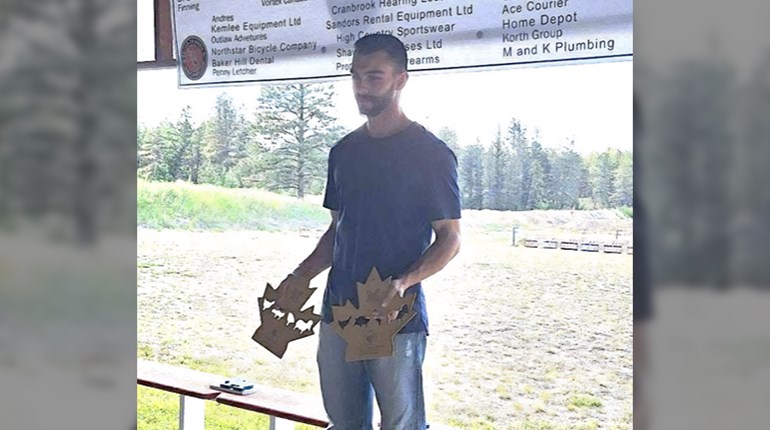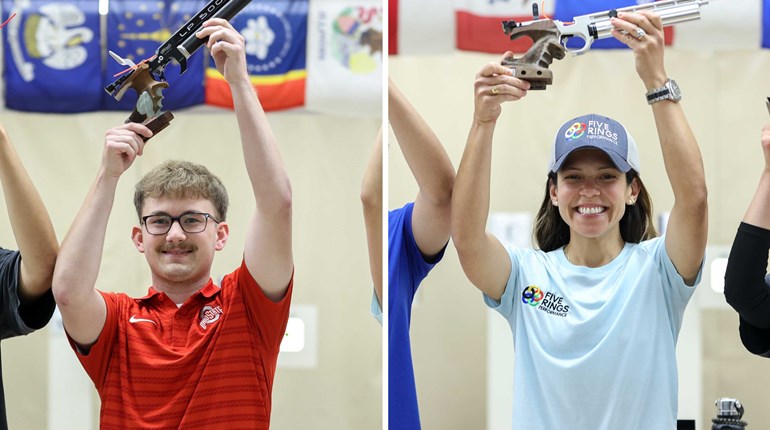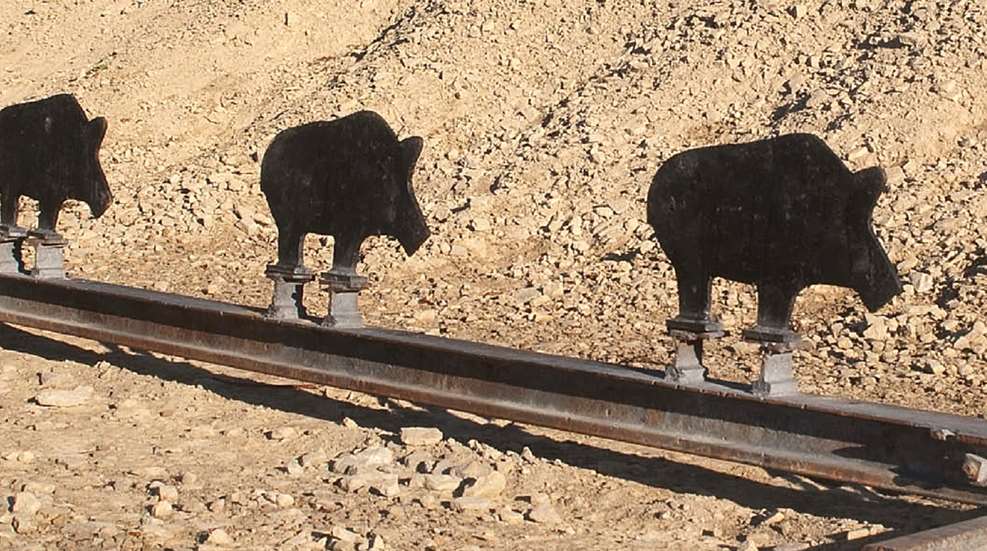
It’s a typical “guy” story—the kind that ought to be true even if it isn’t. It’s alleged that the sport of silhouette shooting originally started with Pancho Villa’s men. Picture the scene: A few guys sitting around the campfire eyeballing the countryside. After a while, one of them says, “Hey, Juan, I bet you can’t hit that turkey waaaaay out there.” To which Juan says something like, “No problem, muchacho. Watch and learn.” After he takes aim, pulls the trigger and drops the target, Juan then challenges the first hombre to hit a target of his selection. Pretty soon this business of popping animals at long range evolves into a regular competition involving shooting at targets that would become post-match barbeque. What happened next is a matter of some debate. Some say that shooting at live animals produced too many arguments about who hit what: “You missed that pig.” “No I didn’t; he’ll fall down in a minute.”
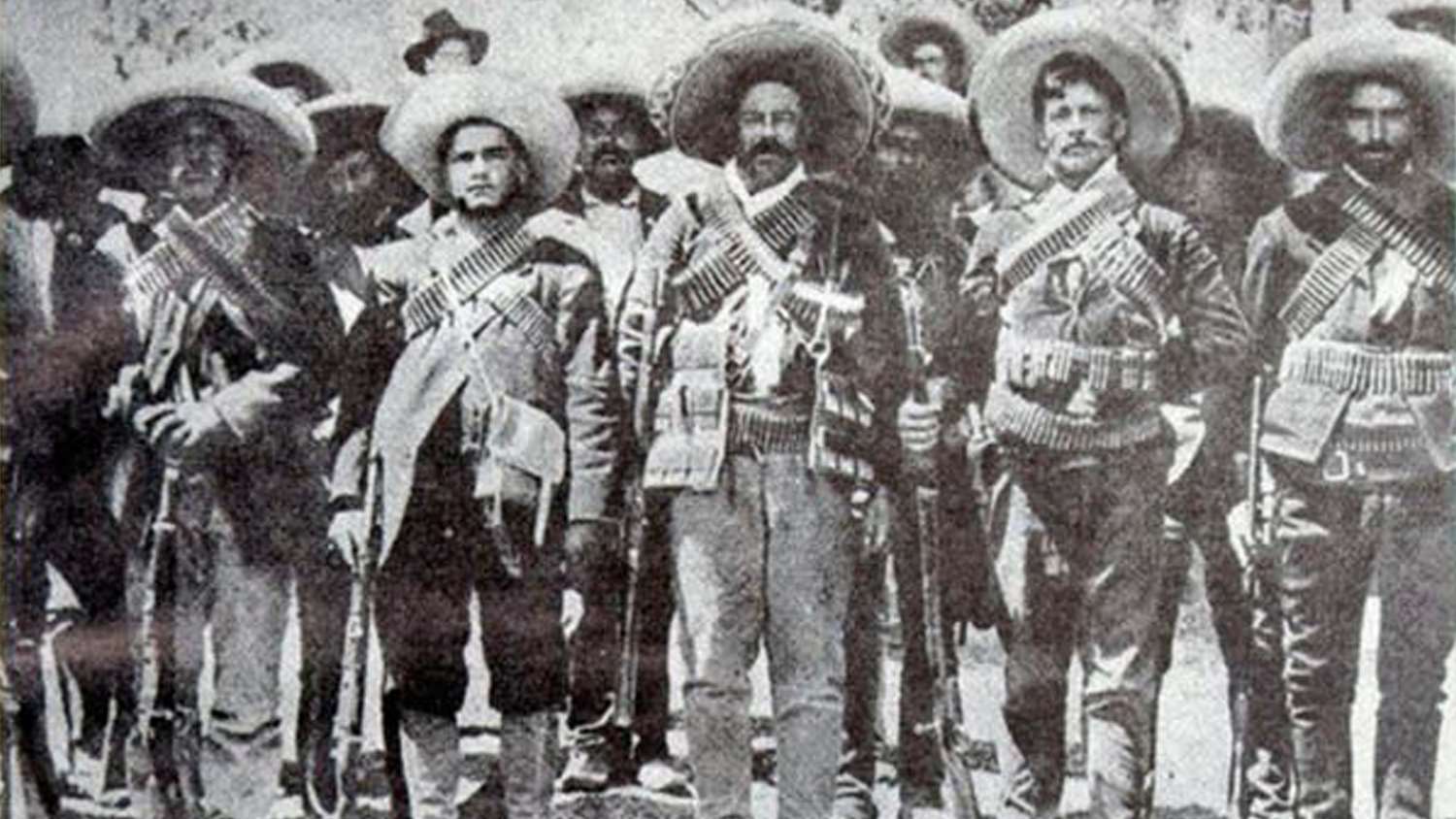
My theory is that as accuracy improved, the camp cook got fed up and politely suggested that the shooters find targets that didn’t need cleaning. In any event, the first silhouette match that used steel targets instead of livestock was held in Mexico City in 1948. Twenty years later, the Tucson Rifle Club introduced silhouette shooting into the U.S. and in 1973, the NRA recognized silhouette as an official shooting discipline. The first national championships were held in November of that year.
Silhouette has remained basically the same ever since. Competitors shoot at four rows of 10 metallic silhouettes at increasing distances: Chickens first, then pigs, next turkeys and finally rams—40 targets in all. You get a point for each silhouette you knock down. If you hit a silhouette and it doesn’t fall, you get zilch.
Over the years, silhouette has morphed into a number of different disciplines: High Power Rifle, Hunter Rifle, Smallbore Rifle, Black Powder Cartridge Rifle, Air Rifle, Air Pistol, Hunter’s Pistol and Cowboy Lever Action Rifle are the basic disciplines. Cowboy Lever Action is broken into three sub-categories to include Smallbore Cowboy Rifle, Pistol Cartridge Cowboy Lever Action and regular Cowboy Lever Action. Black Powder Cartridge Rifle also has a ‘Scope’ class. Hunter’s Pistol is broken into four sub-categories. Further, there are different classes for shooters within every discipline. As a result, virtually anyone who wants to shoot silhouette can probably find a level and discipline of competition that suits them just fine.
Despite the differences in powerplants, everyone shoots 10 each of chickens, pigs, turkeys and rams. What changes with the different disciplines is distance to the target and the size of the target. For example, with air pistol silhouette, chickens are shot at just 10 yards and they are only 11⁄8 inch high. At the other end of the spectrum, high power rifle and black powder cartridge rifle are shooting 26 inch x 32 inch rams at 500 meters. Distances, by discipline, are: Air Rifle—20, 30, 36 and 40 yards; Smallbore—40, 60, 77 and 100 meters; and High Power—200, 300, 385 and 500 meters.
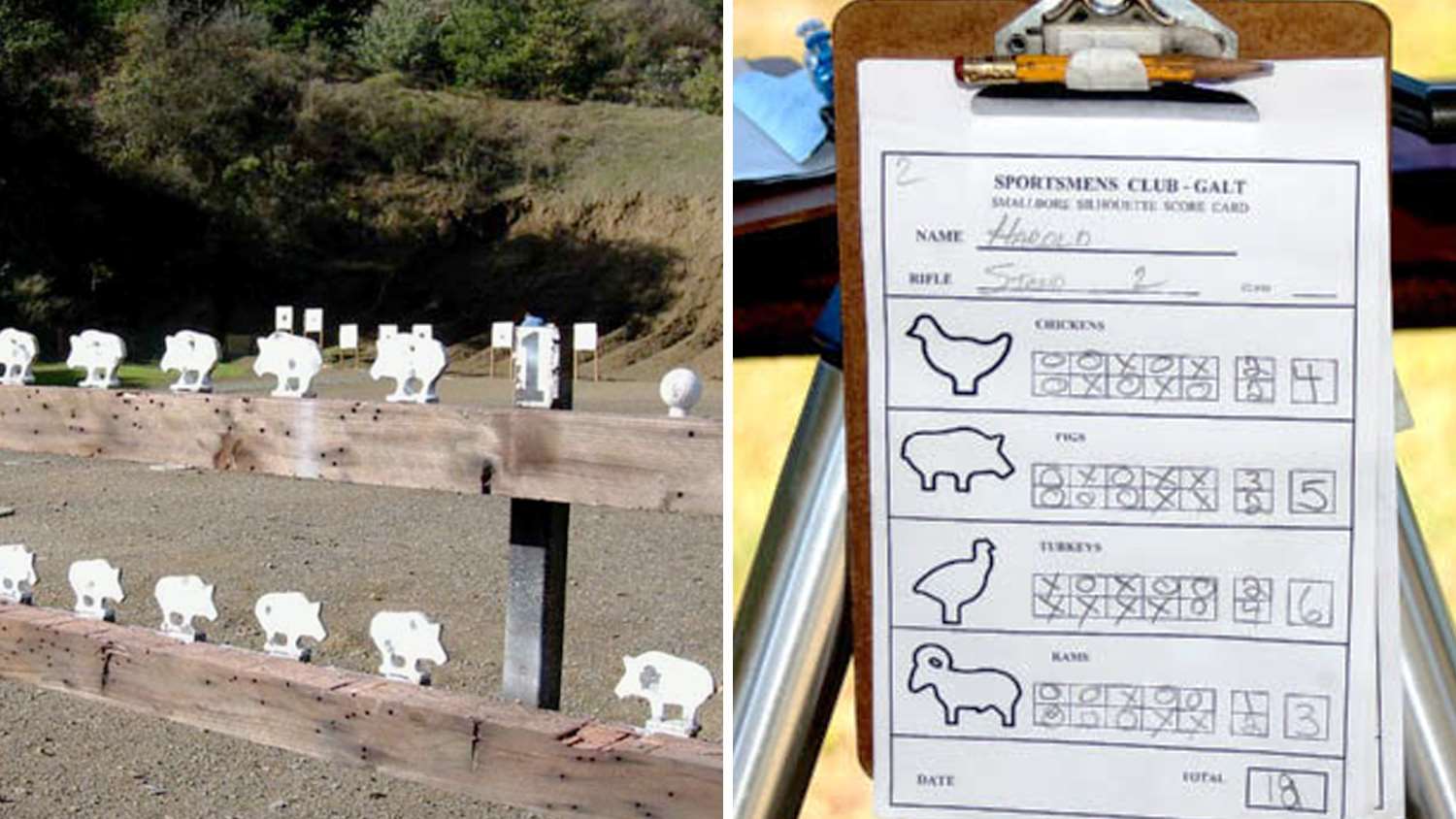
Considering all the disciplines together, silhouette shooters represent one of the largest groups of competitive shooters within the NRA. Each discipline has its devotees as shown in the following interviews:
Mark Pharr (Round Rock, TX) loves shooting high power rifle because of “the feel of the recoil as the rifle is coming back and watching 60 pounds of steel mass (the ram) falling over slowly.” But he also loves smallbore silhouette because it’s very family oriented and open to women and children.
Bill Motl (Porter, TX) has shot smallbore and high power and holds many records in air rifle. He says that “air rifle is, in my opinion, pure shooting. You don’t have recoil or noise, and you don’t have to wear ear plugs.” He notes, though, that you’ll find more people at a smallbore match than an air rifle or high power. “Still,” he says, “in high power, it’s a thrill to watch targets go down at 500 meters. The rams fall slowly, usually two to three seconds after you pull the trigger.”
Cathy Winstead-Severin (Joplin, MO) shoots mainly rimfire (smallbore) silhouette. “I like the fact that it doesn’t have a lot of recoil. You can converse with other shooters behind the line. It’s great for the kids in that sense, and you don’t have to worry about reloading.” She adds, “It’s still hard. You don’t go out and shoot a 40 all the time. You have to read the wind and the mirage, so it’s always a challenge.”
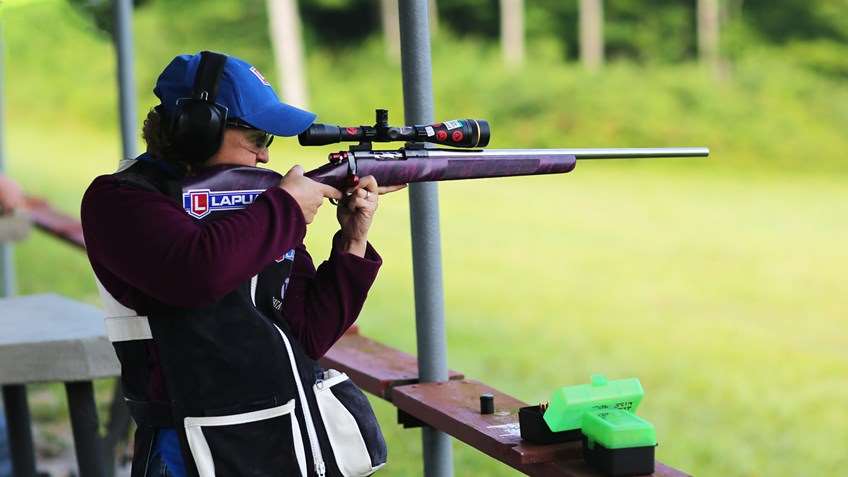
Eric Boos (Little Rock, WA) likes big bore hunting rifle silhouette. “It’s the real deal,” he says. “Five hundred meters offhand is very challenging. The average shooter would assume you are lying, so I don’t talk about it much. When you’re doing it, it’s mentally very fatiguing.” Boos is also a fan of smallbore. “It’s good practice for high power. It’s the same format. You have to develop your position and get into the mental part of the game.”
Hugh Wilson (Trinidad, CO) has shot many silhouette disciplines and has settled on black powder cartridge rifle. He likes the novelty of shooting the old style guns similar to the one that Tom Selleck shot in the movie “Quigley Down Under.” In black powder cartridge rifle, shooters have to stand to shoot the chickens at 200 meters, but can use any position for the remainder of the course. Most competitors shoot prone. “You have to deal with the variables of wind and vision, but when you’re shooting at the turkeys at 385 meters, you still have enough time to get to your spotting scope and watch the bullet hit,” he says. “We have one fellow who is over 90 years old who shoots everything but the chickens.” The other thing that he likes about this discipline is that, “At any given match, there is a fairly large group of people who could potentially win. That makes it more fun.”
No matter which “brand” of silhouette a shooter chooses, what’s common to all of them is that it is simply enormous fun to squeeze the trigger and watch the target fall down.
Learn more about NRA silhouette competition here













